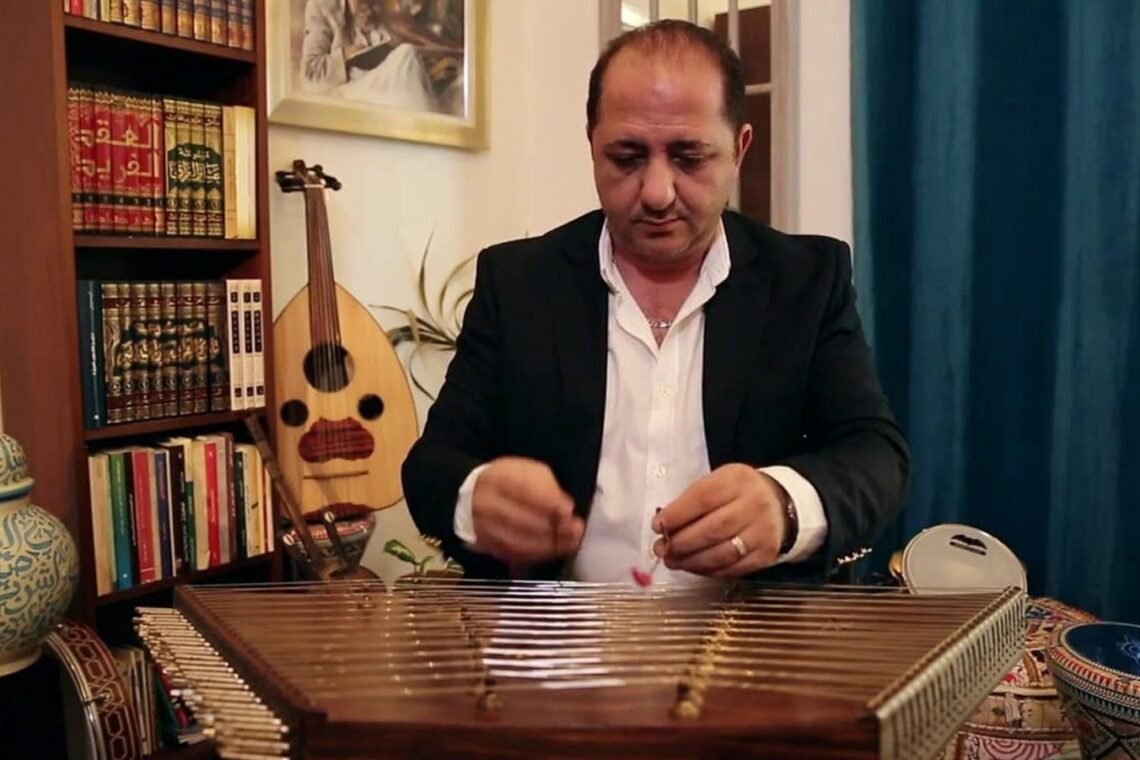
Azhar Kubba and Historical Santur
Its name was associated with the Iraqi Centaur, which dates back more than 3000 years – to the time of King Nebuchadnezzar. This immortal instrument known today as one of the basic instruments in the Iraqi Maqam Division, or what is called the al-Bulghi al-Baghdadi. Contemporary of the great Iraqi artists, composers and academics such as Munir Bashir, Saad Mahmoud Hekmat and Rouhi Al-Khamash. The giants of al-Maqam al-Baghdadi participated on stage, such as the great artist Farida and the artist Muhammad Husayn Gamar. Not only that, but rather he was one of the first pioneers to transfer the daisy instrument to new musical spaces – such as the orchestra of classical music or Western instruments such as the piano, guitar and others. Achievements added to the total of his work, creativity and career in order to be one of the most important ambassadors of Iraqi music to the world.Musician and creative artist Azhar Kubba is the guest of (Iraq Ana) today and an exclusive interview in which he talks about his beginnings, his works, the daisy and its future, and … about Iraq.
Tell us about your artistic beginnings with the music in general and with the centaur in particular? Why the daisy machine?
The beginning was with the family atmosphere, where my father loved music and the Iraqi maqam, and was very interested in my older brothers learning music, as he put a music teacher for them.
When I reached the age of 6 years, my parents wanted me to enter the School of Music and Ballet, and I came to the school after testing by Iraqi and Russian experts, and by that time the eastern section of the school had been opened to Arabic instruments such as santor, walnut, law, flute and other instruments. And the committee decided that I should be on the daisy machine.
The School of Music and Ballet is a school that teaches scientific subjects from 8 am to 12 noon and from 12 noon to 4 in the afternoon. It teaches music with its specialized lessons such as solfege, theories and practical lessons
Then I entered the Institute for Music Studies, and after I graduated from the top ten, I entered Baghdad University, College of Fine Arts, Department of Musical Arts.
Who did you collaborate with during your musical journey?
During my studies at the College of Fine Arts in 1994, my friend and composer Abdul Jamal worked for me a music dedicated to the santour machine called (Fragments from Iraq) and distributed to the orchestra and presented it with the Iraqi National Symphony Orchestra.
The work and the stage is very important because it was the first time in Iraq and perhaps in the world that the Iraqi dancer was played with the orchestra.
I collaborated with other creative artists who had a role in distributing music from the Iraqi heritage or from my compositions: the artist Ziad Al-Awsi, the artist Hilal Matti, and Arshad Kazem.
Your last work?
After CD musical stories, now I am working on two works: the first CD is music from Iraq and some of my musical compositions, and the second CD is music from different parts of the world accompanied by bands from Argentina, Bosnia, Paraguay and Spain.
What is your vision to mix between eastern and western, especially since the effect of this began since the end of the sixties when Elham Al Madfai ‘developed’ Al Maqam songs?
The great singer Elham Al Madfai has an imprint on Iraqi music, and generations still present his musical style.
It is wonderful to present the method of fusion or fusion between one music with another, provided that we have knowledge and knowledge of how to present this type of fusion without distorting the original, especially since the Iraqi traditional music and singing is difficult in terms of rhythm and melody.
Do you see a kennor on its way to extinction?
Yes, if the situation remains as it is now, we need experts not at the level of teaching music and developing the correct curricula for each musical instrument, but to assess the artistic situation and study the needs of Iraq to revive Iraqi music and singing with its Iraqi musical instruments.
Is there anyone inside or outside Iraq who cares about the machine?
The Iraqi dulcimer machine has copies all over the world in Asia, China, Japan, Russia and its neighboring countries and in Europe, Germany, Romania, Hungary and other European countries and it is called Hammer dulcimer and it is similar to the Iraqi Centaur and there is another larger machine called Cimbalom
How is the status of the Iraqi maqam today?
The Iraqi maqam today is dependent on the first specialists in the place, such as the artist Hamid Al Saadi, the artist Muhammad Hussein گmar, the artist Farida, the artist Hussein Al-Azhami, the artist Sabah Hashem and the artist Wissam Ayoub.
How can we preserve this rich legacy and creativity?
That there should be material and moral support for the institutions that deal with music and heritage by people specialized in this field, and most importantly, that those in charge of such projects love Iraq first.
As an expatriate, describe Iraq for us in 3 words?
After 21 years of exile, 3 million words are not sufficient to describe Iraq, but 3 words:
Iraq love never ends.
last word?
I hope every official from the old to the youngest will love Iraq. Then Iraq will return to be better than before.




